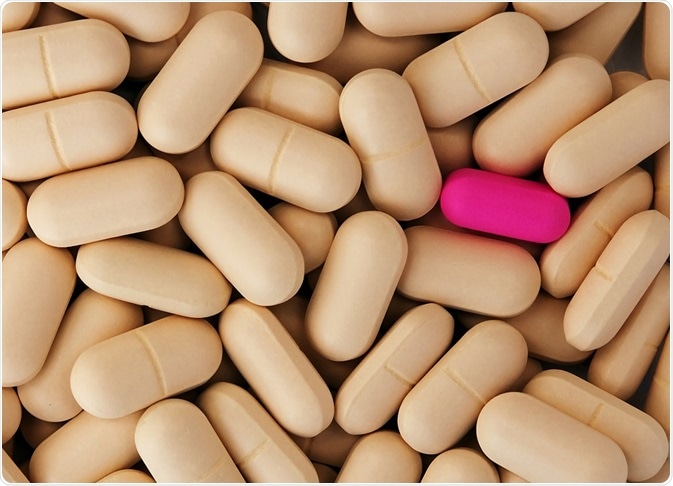lipitor heart failure
Biosimilar drugs (also known as biosimilars, or follow-on biologics) are almost identical versions of a medical product or a drug that are produced by a different company to the parent company. They are typically produced after the original patent for a product expires and must be approved by a regulatory body before entering the market.
This article will cover:
- What are biosimilar drugs?
- Differences between biosimilar drugs and generic drugs
- Why are biosimilar drugs attractive?
- Challenges in the biosimilar drug industry
 Sarah2 | Shutterstock
Sarah2 | Shutterstock
What are biosimilar drugs?
Biologics (another term for biopharmaceuticals) are large, complex molecules that are produced by living organisms, such as mammalian cell lines. As these are highly complex compounds, alli orlistat reviews it is often difficult to generate exact copies of the drug. Thus, the competitor companies often create highly similar products. They may also carry out tests and clinical trials to show the similarity of the drug in terms of the clinical effects.
Differences between biosimilar drugs and generic drugs?
Similarity in structure
While the primary structure of a biosimilar drug is identical to the biologic, variations in the structure that have non-clinical effects are allowed. This is different from generic drugs that are an exact same copy of a molecule whose various clinical manifestations have been established.
Biosimilar drugs also start with established molecules, but as the biosimilar and original are not exactly the same, they require further testing and analysis before demonstrating that the difference is not clinically relevant.
Additional tests are also conducted on the quality, bioactivity, efficacy, and safety of the drugs. In vitro assays can be used to detect any differences in the molecule, and clinical trials can be used to confirm the presence or lack of clinically-significant differences.
Differences in cost-effectiveness
Another point of difference between generic and biosimilar drugs is the cost involved to develop new drugs. As the bioequivalence trial for the biosimilar requires a significantly lesser number of patients compared to the number of patients required for multiple clinical trials, the cost of developing a biosimilar is significantly lower.
Higher developmental risk
There are also a few disadvantages as the developmental risk associated with biosimilar drugs are higher, and every step can reveal potential issues that may make the product commercially unviable. Various tests should be able to replicate the biological product, and in many cases, there may be additional technical and legal obstacles to the road to commercial success. Thus, the companies involved in manufacturing biosimilar drugs should have sufficient expertise in the areas of development and intellectual property rights.
Lower motivation to enroll
As the biosimilar is a copy of another drug that already exists, they may be reduced patient and practitioner motivation to use and prescribe. While several hurdles are present, biosimilar drugs are also an opportunity for companies that have enough financial backing and technical know-how.
Why are biosimilar drugs attractive?
In 2017, Pfizer reported a doubling in its worldwide revenues from Inflectra (infliximab-dyyb), a biosimilar drug. These and other reports suggest a rise in the popularity and use of biosimilar drugs. The biosimilar drug marker is expected to become a 31 billion-dollar industry by 2023.
Due to the attractive market, several biosimilar drug companies are joining the competition. However, the five to eight-year developmental time for a biosimilar drug makes it difficult for newer players to join in. Still, the next generation of biologics will lose its patent protection in 2020, which can pave the way for companies to generate biosimilar drugs.
Challenges in the biosimilar drug industry
Success rate
The small molecule generics have a success rate of 95%, while the biosimilar drugs have a success rate of 50–75%. The developmental risks are also higher in the case of biosimilar drugs.
Marketing strategy
As each biosimilar is different, the launch and marketing strategies need to be planned based on each biosimilar. The market drives may vary based on the therapeutic areas and patient population. Another factor that can affect the sale is the geographic factors, price, and disease prevalence. Different stakeholders (payers and physicians) may also have their own specific preferences that can determine how well a biosimilar substitutes the original drug,
Awareness and knowledge among physicians
Survey shows that despite certain biosimilar drugs being in the market for more than a decade, their knowledge is often limited amongst pharmacists and patients. This is dependent on how well the physicians are comfortable with the alternatives of biosimilar drugs and they also need to be correctly informed to make the switch between original drugs and biosimilar drugs.
Sources
- Newzrella, A (2018) BIOSIMILARS Prospects and challenges. (resultshealthcare.com/insight/biosimilars-prospects-and-challenges/)
- Lyman, G. H., et al. (2018). Rationale, Opportunities, and Reality of Biosimilar Medications. DOI: 10.1056/NEJMhle1800125.
- Biogen. Biosimilars versus generics. (www.biogen-international.com/…/biosimilars-vs-generics.html)
Further Reading
- All Biotherapeutics Content
- How are Host Cell Proteins Removed from Biopharmaceuticals?
- LC-MS for HCP Detection and Analysis
- Tracing the Protease Inhibitor AEBSF with RPLC-UV
Last Updated: Jul 31, 2019

Written by
Dr. Surat P
Dr. Surat graduated with a Ph.D. in Cell Biology and Mechanobiology from the Tata Institute of Fundamental Research (Mumbai, India) in 2016. Prior to her Ph.D., Surat studied for a Bachelor of Science (B.Sc.) degree in Zoology, during which she was the recipient of anIndian Academy of SciencesSummer Fellowship to study the proteins involved in AIDs. She produces feature articles on a wide range of topics, such as medical ethics, data manipulation, pseudoscience and superstition, education, and human evolution. She is passionate about science communication and writes articles covering all areas of the life sciences.
Source: Read Full Article
